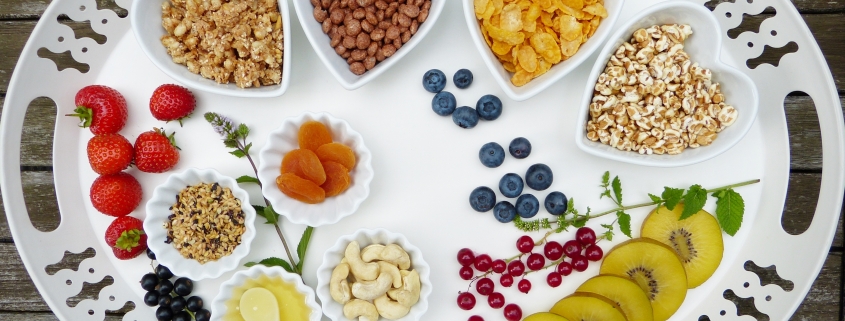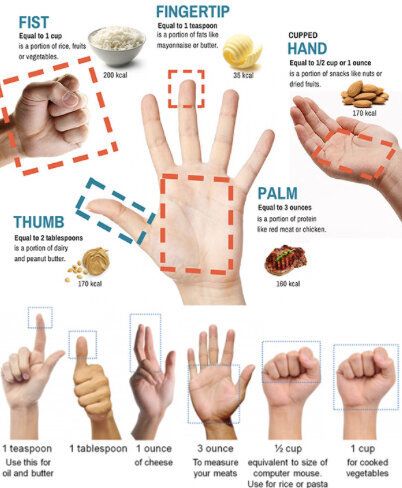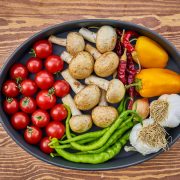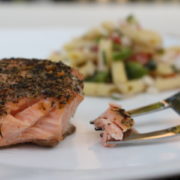What is Portion Control and Why is it Important?
Over the years you’ve been hearing plenty of buzz words when it comes to losing weight. From Atkins to Keto and CrossFit to Kettle bells, there is always something new popping up in the world of health and fitness. Portion control and serving sizes have also been part of this world because what you eat matters in 80% of how you look and feel. Unfortunately, it’s very difficult to keep up with all of the recommendations so we’ve put them all here in one place for your convenience.
A little known difference is also portion sizes versus serving sizes. The AHA defines portions as being “100 percent under our control. Many foods that come as a single portion actually contain multiple servings.” A serving size is actually how much of a food contains the amount on the nutrition label.
Why is portion control important?
There are many layers in which your health, weight, and fitness levels are impacted. Starting with how you think all the way down to your daily routines. Controlling portion sizes falls somewhere in the middle. You have to be aware of what you’re putting on your plate as well as how much is needed and insert that into your meals. Consistency is key, of course, because if you eat twice as much as you need every other day, it won’t balance out to a calorie deficit.
Controlling your portion sizes then, has an affect on how you think about food. The number one challenge we have as humans is to be kind to ourselves and overeating immediately makes us feel bad. Pre-planning your food will help you with the way you feel before and after a meal and encourage you to keep going!
How can I control my portion sizes?
Depending upon the type of eating habits you currently have, you can manage this in an array of different ways. Try one or more of these to boost your portion control:
- Use smaller plates. Our portion sizes have become out of control. We want more for less in restaurants, at home, and in our lives so we have demanded that we get our ‘money’s worth’. The issue here is that your money IS going where your mouth is – and straight into your fat cells. Many menus now offer a half order – which ironically is often a healthier portion size.
- Use the Portion Fork to eat slower. Using the Portion Forks will not only give you a visual cue, but can assist in eating slower and taking smaller bites. It will help make controlling your portions that much easier.
- Use apps that help you stay on track with food and exercise. Try a few out and see which ones you like. There is truly something for everyone these days when it comes to helpful weight loss apps so do take the time to try some out. You may even find it fun!
- Read the labels. Know what a serving size is for your meal and measure out your food based on your calorie goals. If you must, use a scale, but you can also visualize the sizes as a baseball (pasta), deck of cards (meat), or four dice (cheese/dairy).
- Take half home. Eating out is not banned if you’re choosing foods within healthier food groups. One great trick is to immediately put half to the side/in a box before you even start eating. This way you won’t be caught off-guard with how much you’ve actually eaten and can then focus on enjoying the company as well as the meal. Essentially this is an out of sight out of mind trick.
What are the portions for losing weight?
It does vary depending upon your current diet of course, but generally you should be in a ‘calorie deficit’ at the end of the day. Whether that’s from exercising or eating less is up to you, but doing both at a reasonable pace will boost your energy levels and overall health. Whatever you do, make sure to contact your doctor before making any drastic changes in your diet or exercise.
If you learn more about healthy portion sizes and how to control portions like the amounts below for maintaining weight, and you find that you’re far beyond that, it will likely help you lose weight. Your body will slowly begin to learn that it has enough if you are sure to listen to it more. This is especially true if you have a tendency to eat whatever is on your plate, regardless of the serving size.
What are the portions for maintaining weight?
How many calories you should have depends on your age, your gender, and how active you are. A moderately active woman should have 1,800-2,200 calories a day. An active average-sized man should have 2,200-2,800 calories. Have a healthy balance of these kinds of foods each day:
- 1 1/2 – 2 1/2 cups of fruit and 2 1/2 – 3 1/2 cups of vegetables
- 6-10 ounces of grain, 1/2 from whole grains
- 3 cups of nonfat or low-fat dairy foods
- 5-7 ounces of protein (meat, beans, and seafood) each day
- No more than 5-8 teaspoons of oils, mostly from plants, fish, and nuts
- 170-400 calories from solid fats and added sugars
Another way to see this visually is by simply using your hand as a measuring tool. This will be especially useful if you don’t have a scale or measuring tool:
There will be, of course, many different variations of these as well as specifics on each food group, but you do not need to be exact. In fact, if you have trouble sticking to strict diets or routines, this will be debilitating for you. Keep it to a general amount and you won’t feel stuck or trapped pushing you to return to eating unhealthy.
Take it Slow
No matter which route you choose to ensure you’re eating healthy sized portions, you don’t need to rush. Healthy weight loss and portion control go hand in hand, but it takes time. Be kind to yourself and how long it takes because just as it wasn’t put on in a day, it won’t be taken off in a day. We’re here to support you!






